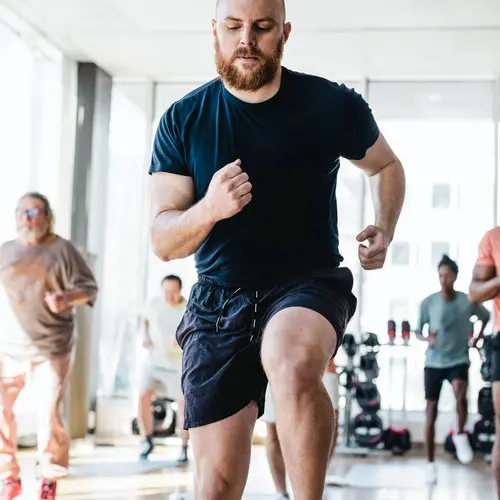If you’re familiar with yoga at all, then you know that yoga has many props and accessories you can use to improve your practices, such as yoga blocks. You may have wondered what are yoga blocks for and how to use them.
These blocks have multiple uses, but overall, they help yogis form and hold poses. These handy props can be used in either seated or standing forms and are especially helpful in improving flexibility.
What Are Yoga Blocks Used For?
Yoga blocks — blocks that can be made of foam, cork, rubber, or wood — are one of the most popular props that you can use in yoga practices to help with your poses. These blocks are typically used to extend the arms but have other uses, too, such as supporting the back, hips, and head.
Using yoga blocks can help you feel more comfortable practicing yoga and bring you more enjoyment.
What Are the Benefits of Yoga Blocks?
Yoga blocks are helpful to beginners, those with physical limitations, and those who are recovering from or prone to injuries.
Some of the benefits that come with using yoga blocks include:
- Supplementing range of motion
- Correcting alignment
- Helping yoga beginners
- Supporting muscle engagement
- Adding support at low, medium, and high positions
Yoga Blocks for Beginners
If you’re a beginner yogi, it might be okay to go for a cheaper yoga block until you advance further in your practices. However, it’s recommended to spend a little more on a better-quality yoga block that will maintain its shape and form with repeated use, especially for foam.
Other than that, there are a few factors to consider when choosing your first block:
Material
Material-wise, you’re going to want something that suits your specific fitness needs. For example, if you plan on using the blocks as an extension of your arms, you must choose a block that will feel comfortable in your hands and won’t strain your wrists.
At the same time, though, you’ll also want a block that provides you with a good amount of support, so your block should be both comfortable and supportive in your yoga practices.
Blocks made from cork are favorites among experienced yogis, so if you’re unsure of which kind to get, you can always opt for a cork block.
Shape
If you’re thinking about yoga blocks, chances are that you’re picturing a rectangular shape. However, there are two other shapes you can consider: a yoga block with curved edges and a wedged yoga block.
Yoga blocks with curved edges can double as pillows, which is especially helpful when practicing relaxation poses on the ground. Wedge blocks, on the other hand, are a great option for people looking for support with non-yoga exercises, too.
Size
Size is another important factor. Your block needs to be wide enough to make reaching it on your mat easy during your poses. Plus, it needs to be big enough to support your body weight.
However, if your block is too big, then its weight might make your poses more difficult. So, it’s important to find a balance between the two.
Use
If you plan on using your yoga block daily, then you’ll want to make sure to get a durable one. If you’re going to be using it only once in a while, durability isn’t quite as important.
Price
As with most things in life, yoga blocks come in a range of prices. While it might be tempting to throw just a few dollars at a cheap yoga block, choosing a more expensive one may be a better option. Pricier ones will be of higher quality, ensuring that your yoga block lasts for many yoga sessions to come.
How To Use Yoga Blocks: Exercises
There are many stretches, poses, and exercises that you can use yoga blocks for. Some of the most popular yoga block exercises include:
Stretching Your Feet
To do a foot stretch with a yoga block, you’ll also want to have a bench or shelf on hand. If you have neither of those handy, then find an alternative that has enough room underneath it for the block and your foot.
Once you have the necessary tools, you can place the yoga block underneath your tool of choice and then place your foot underneath the block. Following this, straighten your leg slowly, stretching your foot in the process.
Feel free to repeat for both feet.
Front Splits
With a yoga block placed on the floor, put one of your feet on top of it. Using your other foot, slide back as you go into a split.
To add challenge to this stretch, you can use some stacked yoga blocks, a chair, or a bench in front of you to support your first foot.
Side Splits
For this stretch, sit on the floor in an upright split position. Place a yoga block underneath each of your knees. Lean forward slowly while your knees remain planted on the blocks. Lean forward until you are in a laid-out position on the floor with your legs split behind you on the blocks.
Shoulder Exercises
With the yoga block placed in an upright position, lie down on your back with your shoulder blades positioned against the top of the block. Extend your arms over your head and against the floor.
For more of a challenge, you can try pumping your arms up and down.
Back Exercises
Similar to the shoulder exercise, place the yoga block in an upright position and then position your back against the block. Stretch out your arms above your head.
Other Considerations
There are several other exercises and poses you can do using yoga blocks, including:
- Virasana or Hero’s Pose
- Ardha Chandrasana or Half-Moon Pose
- Supta Baddha Konasana or Reclining Bound Angle Pose
- Matseyasana or Fish Pose
No matter which poses, stretches, or exercises you decide to do with your yoga blocks, you’re sure to improve your yoga practice.

